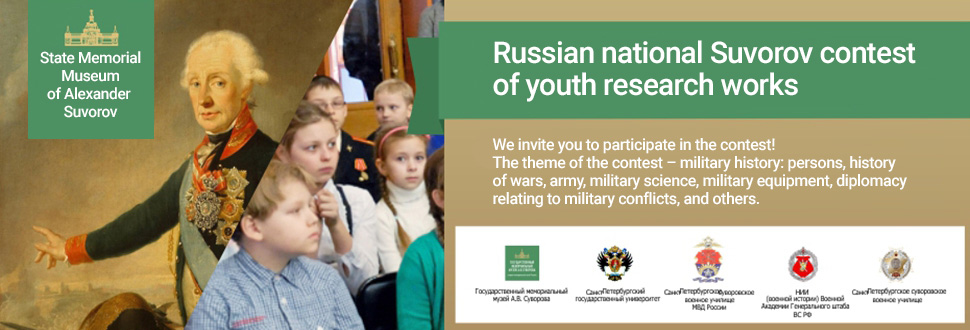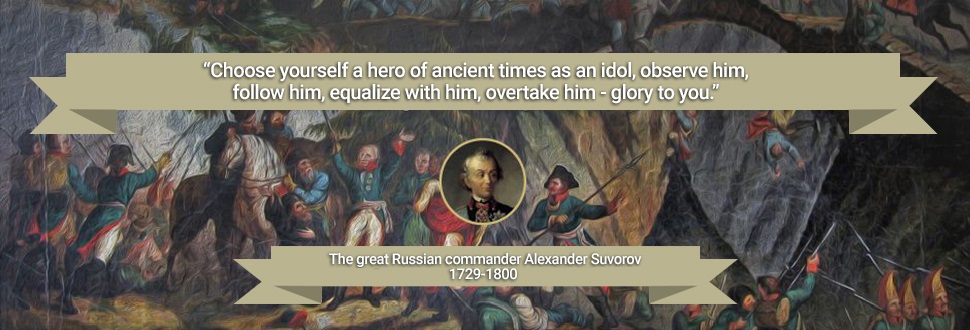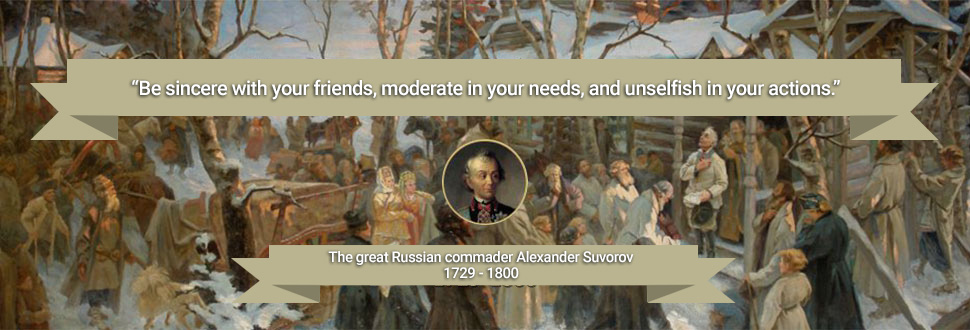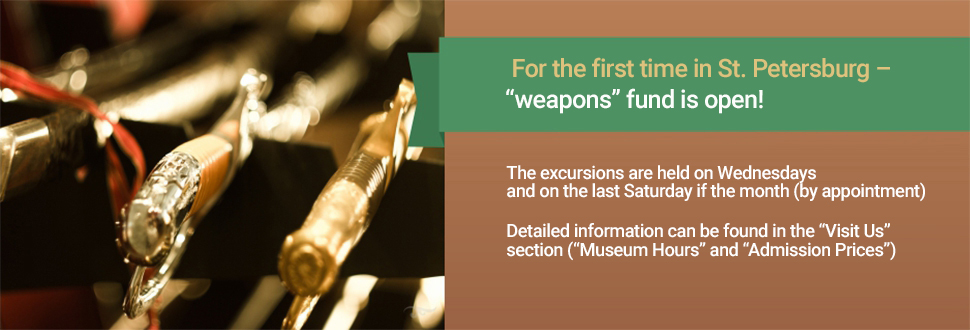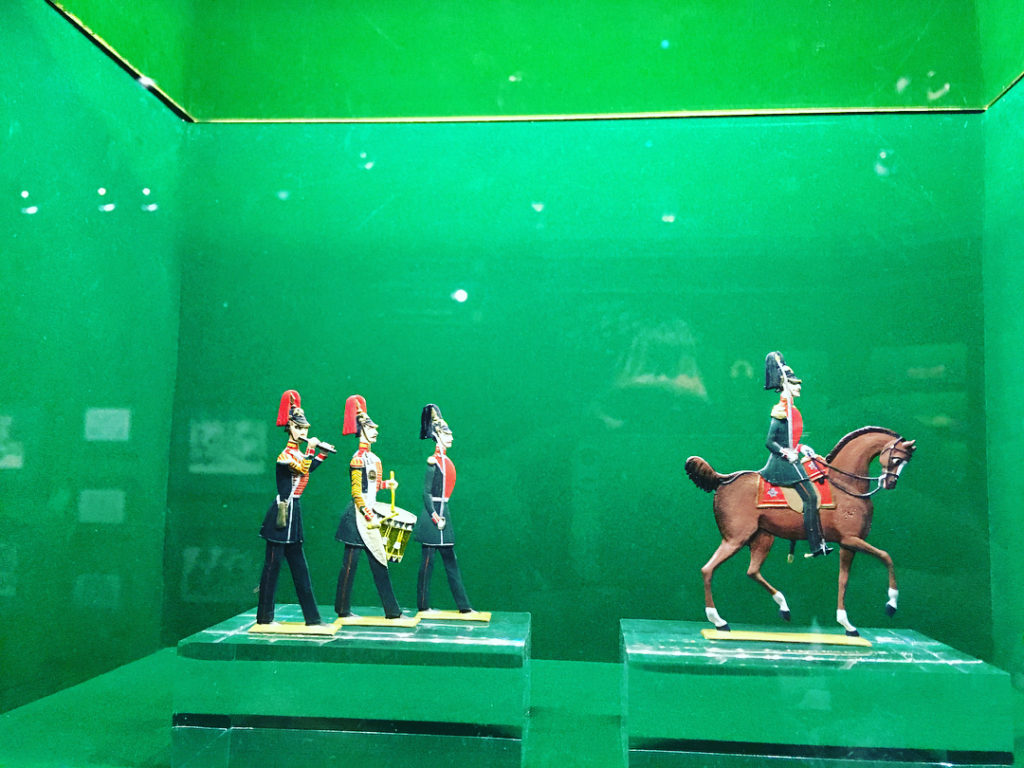
The Central Hall of the museum is impressively spacious, simple and solemn. The dominant part of the hall is the stained-glass window, which depicts Suvorov in a grand pose in the style of the ceremonial portraits of the 18th century. In front of the stained-glass window, framed by guns, are the combat awards and the personal weapon of the commander. In the niches behind the central showcase is the reconstruction of one of the rooms of the house in the village of Konchansky, where Suvorov served his exile, a composition of the items from Glaris house, and Suvorov’s room in the St. Joseph Monastery in the Mutten Valley, where Suvorov stayed during the Swiss campaign. The other niches and showcases of the hall display the trophies of the Russian army, and the walls are decorated with the Russian and Turkish.

The Large Left Hall of the museum is dedicated to the life and work of Alexander Vasilyevich Suvorov. The exposition depicts his service during the four reigns, relations with contemporaries, participation in the Seven Years’ War, the Russo-Turkish and Polish wars, and the Italian-Swiss campaign. One of the 39 guns taken as trophies after the battle of the Italian city of Novi in 1799, the French cannon of the Gribovala system, stands in the center of the hall.

The Small Left Hall has a section devoted to the family and the immediate descendants of the commander. The exposition displays portraits and personal belongings of his wife Varvara Ivanovna Suvorova (whose birth name was Princess Prozorovskaya), his daughter Natalia Suvorova (“Suvorochka”, whose name after marriage was Countess Zubova), his son Arkady Aleksandrovich Suvorov, and his grandchildren Konstantin Arkadyevich Suvorov and Alexander Arkadyevich Suvorov.

The Large Right Hall describes the martial art of Suvorov. The exposition reveals the innovative aspects of his commandment and shows the combat habits of the great commander in contrasts with the contemporary military art. Aside from traditional exhibits, such as weapons, uniforms, and equipment of the Russian army during the time of Suvorov, a number of mock-ups of battles made up of tin soldiers are displayed in this hall.
hall3 hall2 hall1 hall4 hall5
Tin Soldier Museum
In the “Museum of the tin soldier” with the help of animations and figurines visitors are told the story of the tin soldier from ancient times to modern times.
The main exhibits in the windows are the soldiers. German, including those created by order of Emperor Nicholas I, storyline series showing different aspects of everyday life and war. Soldiers of the Soviet model in the tradition of German masters, and completely independent figures made by sculptors in the XX century. Presented and portrait figures depicting famous personalities – Napoleon, Kutuzov, Suvorov, the creator of tin miniatures E. Heinrichsen. Exhibited a unique figure that has been in space. There are also miniatures depicting literary characters, illustrations for books, of course, the hero of the fairy tale G.Kh. Anderson’s “Resistant Tin Soldier.” With the help of theatrical mechanics and multimedia comes to life the story of a brave warrior and a beautiful ballerina …
In the windows – the battle of Rymnik, Borodino, the Stalingrad defense and the Victory Parade. Here are also mockups telling the story of the Russian army in tin miniature.
The jewel of the museum is a mechanical diorama-reconstruction of the last parade of the Russian Imperial Guard in 1914 on the Field of Mars. Spectators can see not only marching regiments, but also hear the “direct” broadcast of the parade from the past.
The exposition is completed by a diorama dedicated to the Swiss campaign of Suvorov. In the snowy Alps heroic episodes come to life: the battle for the Devil’s Bridge and the ascent to the Panix Pass …
The Open Arms Fund
Keep it open!
This is the first open museum museum of weapons in St. Petersburg.
The organization of open storage of funds inaccessible to the public is the reaction of museums to the growing interest of visitors to collections in storerooms. About one third of the museum’s weapons collection is on display.
In the collection – samples of weapons of the late XVII-XIX centuries. These are beautiful ethnographic samples, objects of weapon art. Among the unique exhibits are the sword of the last emperor of the state of Manjo-Go Pu-I, the award sword “For courage” of Grand Duke Mikhail Pavlovich, the brother of Emperor Nicholas I, the core, the canister and bullets found by VP Engelhardt on the ground fighting Suvorov troops in Switzerland, samples of award weapons not only of the Russian Empire, but also of the USSR.
